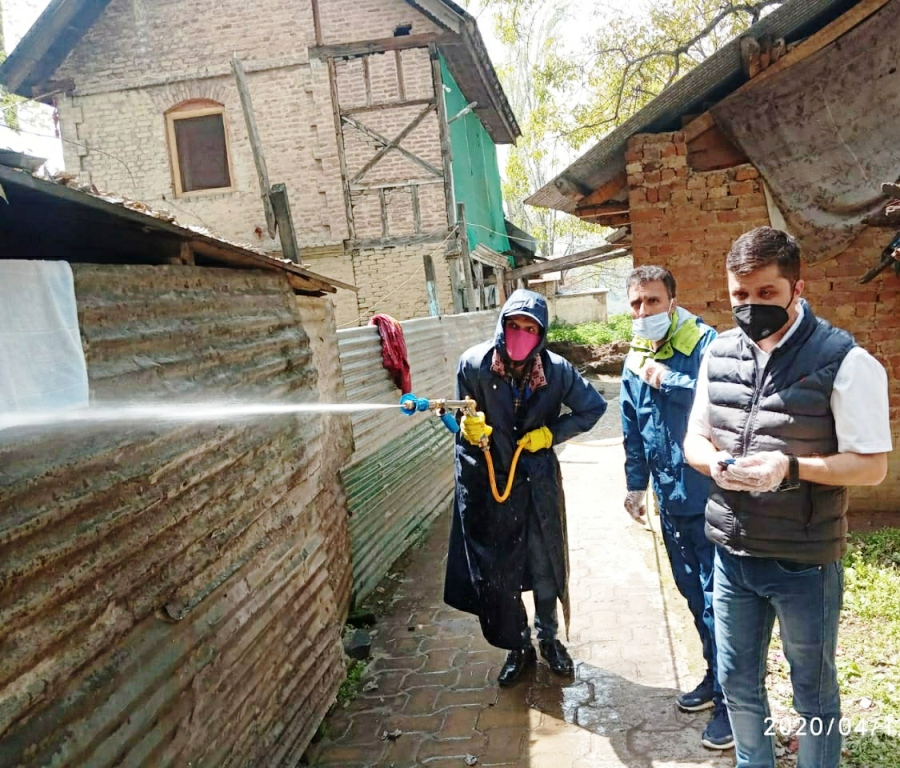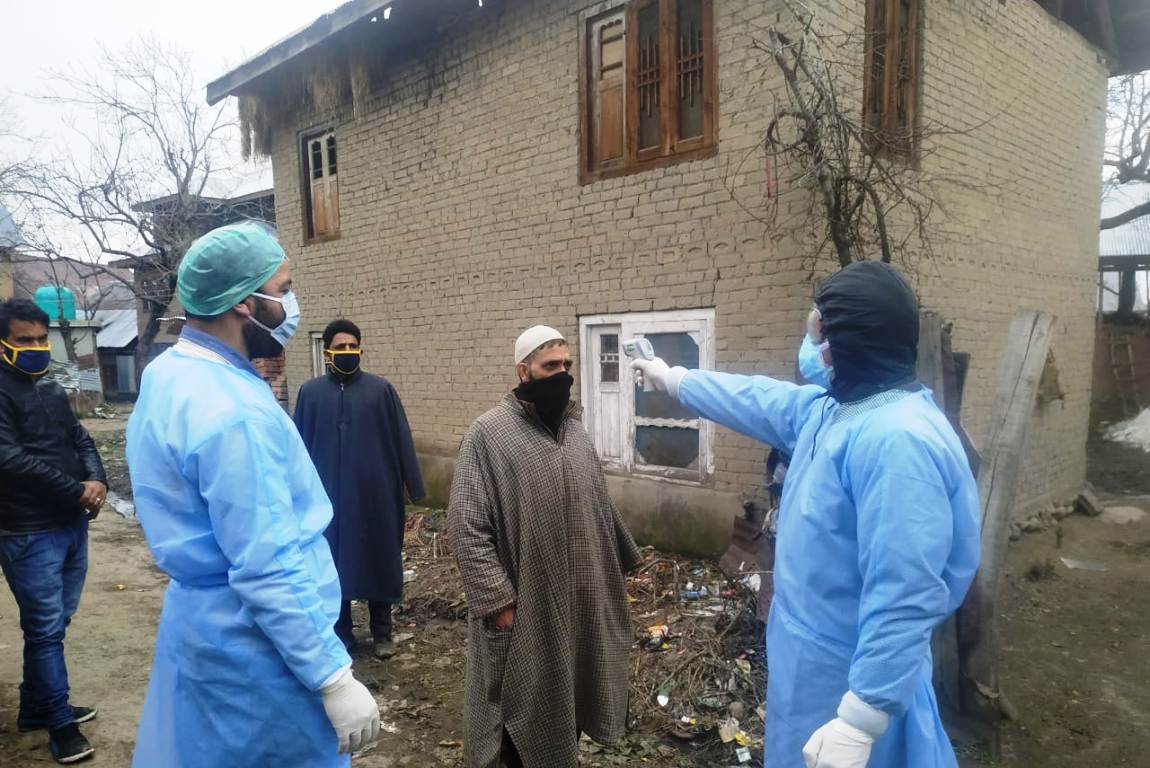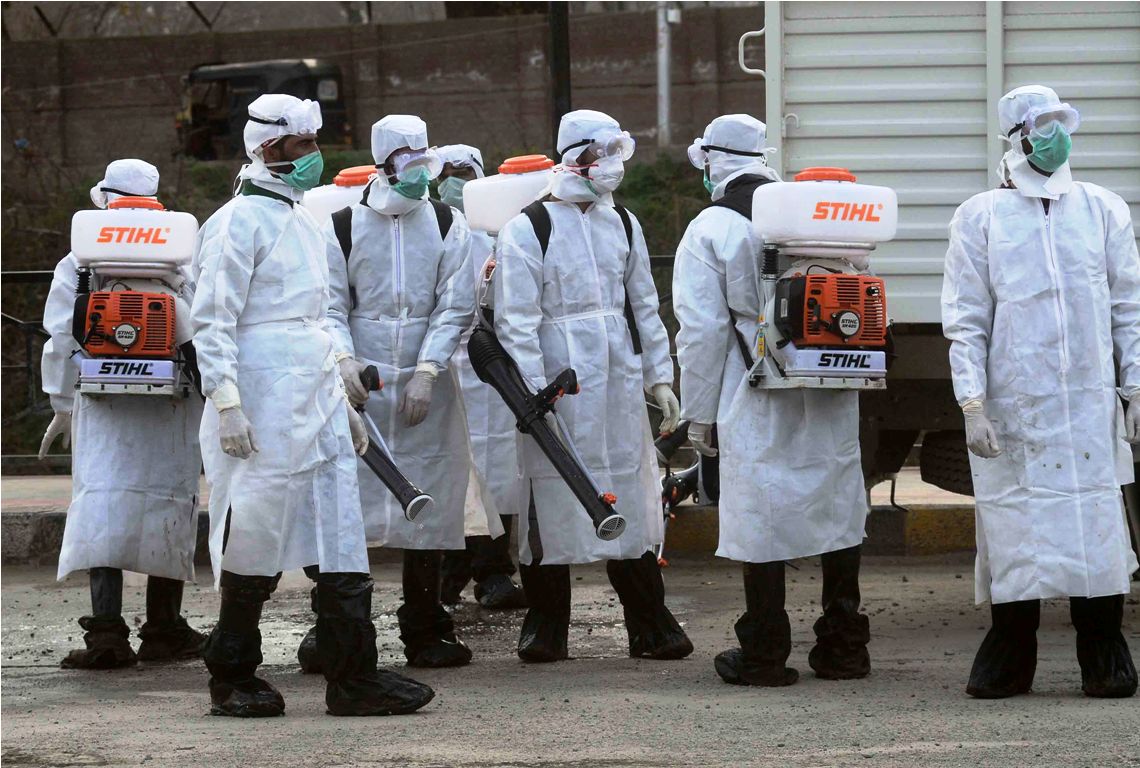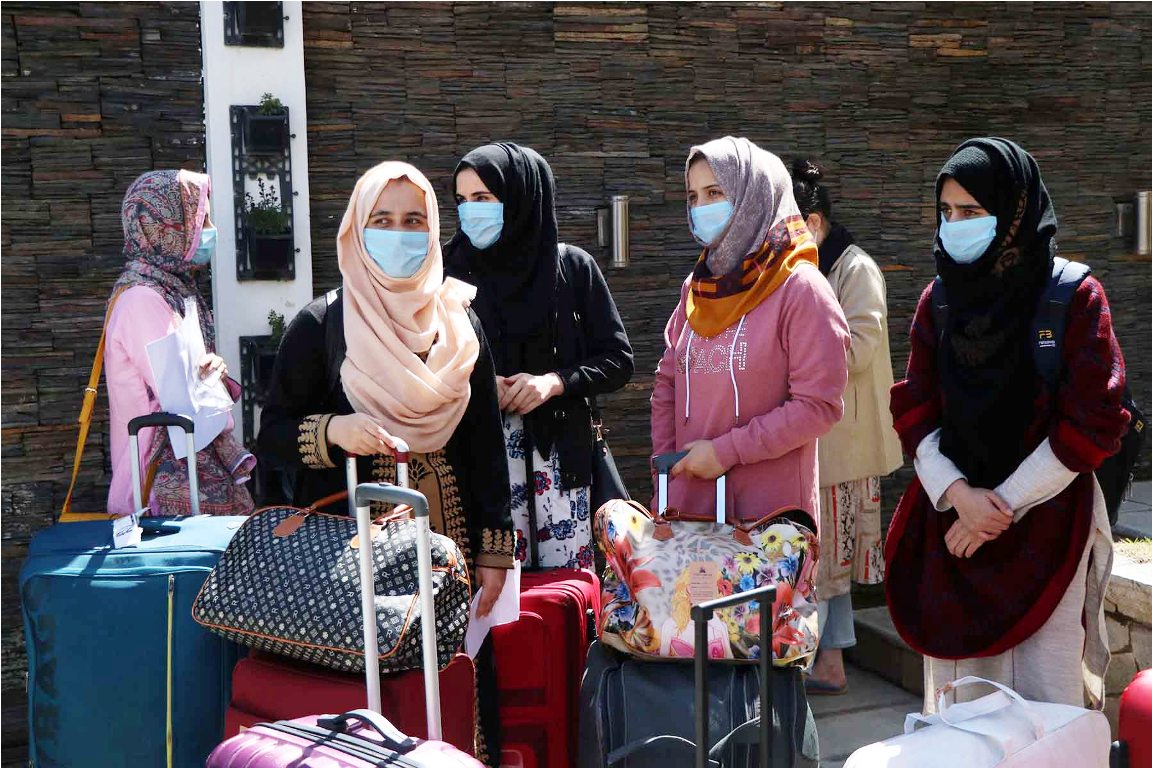by Dr Zeenat Farooq
Covid-19
It is a newly identified member of the Coronavirus family.
These viruses are known to cause illness ranging from mild flu to more severe conditions like respiratory distress and multi-organ failure. Two of the early identified members of the Coronavirus family known as Severe Acute Respiratory Syndrome (SARS), originated in China in 2002 and Middle East Respiratory Syndrome (MERS) originated in the Middle East in 2012 have also been known to cause severe illness in certain groups of individuals. The virus causing Covid-19 was previously known as SARS CoV-2 due to similarities that it shared with the SARS-CoV before it received its official name as Coronavirus Disease-2019 (Covid-19) by the World Health Organisation (WHO).
Origin
Coronaviruses are zoonotic which means that they are transmitted from animals into humans. SARS has been found to transmit into humans from civet cats. Similarly, MERS has been found to transmit from camels into humans. Covid-19 originated in the Hubei province of Wuhan, China in December 2019. Although many theories have been put forward regarding the origin of this virus, it is still unclear how the virus first infiltrated human hosts. It has been documented in the scientific literature that there are many other members of the Coronavirus family which are present within the animal kingdom but are yet to invade humans.
Symptoms
Most common symptoms of infection include cough, fever, and difficulty in breathing. However, in severe cases, the symptoms can progress to pneumonia, respiratory distress syndrome, cardiac arrest and kidney failure.
Testing
Covid-19 screening is done through a molecular biology technique called Real-Time Polymerase Chain Reaction (RT-PCR). To put it into simple words, this technique detects the genetic material (RNA) of the virus in the samples being tested like nasopharyngeal swabs. If the virus is present in the sample, its RNA would be detected by this method. This is a very powerful and sensitive detection method but is slightly time-consuming. However, thanks to the scientific researchers around the globe, other more robust and rapid methods of detection are already being evaluated and would soon be available in the hospitals.
People most likely affected by it
Among the many cases of Covid-19 that have surfaced in different parts of the world over the last three months, it has been seen that symptoms and severity of infection varies considerably between people. While some people can be absolutely non-symptomatic throughout their illness, other can have mild symptoms like cough and flu. However, some severe cases can experience worsening of symptoms gradually over the course of their illness, starting from cough and fever and progressing into multi organ failure and respiratory complications. Depending upon the severity of infection and symptom presentation, patients suffering from Covid-19 can be arbitrarily put under three categories:

SMC sanitizes Child Care Homes, Leper Colony, Central jail, Psychiatric hospital
Category I: People who are young and healthy could be entirely asymptomatic or they can experience mild flu like illness which gets better progressively, even without much of medical attention.
Category II: Some people may experience worsening of symptoms following mild illness and hence might require hospitalisation and treatment. However, such patients can still recover with the help of proper medication and care. A large number of people in both China and Europe have shown this pattern of illness but have thankfully recovered due to the undying efforts of medical and healthcare personnel.
Category III: Some of the people can develop progressively severe illness, starting with mild flu-like symptoms and culminating in ventilation support requirement and eventually death. But it must be taken into account here that most of the patients belonging to this group were aged above 60-70 and had several underlying health complications like kidney disease, severe diabetes, pulmonary disease etc. These people also have the likelihood of having a compromised immune system and are hence more likely to fall prey to the disease.
The million-dollar question here is that “Is Covid-19, therefore, a deadly disease”? The answer to this question lies in the immune resistance, age and health status of the patients.
Supportive therapy
Supportive therapy consists of medications which are given to patients suffering from Covid-19 in order to alleviate their symptoms and relieve their illness. Many anti-virals like rotavir, remdesivir and hydroxychloroquine have already been given to Covid-19 patients in different parts of the world and have been seen to reduce viral loads and combat illness. Similarly, many people can suffer from bacterial co-infection for which many antibiotics have been given to patients, both in Europe and China.

Coronavirus: Sterilization drives held at Ramnagri, Sedow
Additionally, many of the patients suffering from Covid-19 might be dealing with pre-existing health conditions which also needs to be considered while treating patients for Covid-19 using supportive therapy because many of the drugs can have side effects on people with pre-existing complications and hence treatment plans have to be formulated on a case by case basis for all the patients, especially those in category III.
Way Out
From this classification, it becomes quite clear that Covid-19 is not as deadly as many people believe it to be. In fact, the rates of mortality with Covid-19 that has been evaluated so far by WHO is around 1% (that is, 1 in 100 people who contract the infection die) whereas the rates of mortality for the nearest relatives of Covid-19 that is, SARS and MERS are 9.5% and 34.4% respectively.
However, the biggest problem with Covid-19 is the “human to human transmissibility”. With a steep rise in cases even day and every hour, the biggest fear of government establishment, healthcare and support staff personnel is that if Covid-19 spread continues at an unabated rate, millions of people would be suffering from the disease which would completely overwhelm the already incapacitated health infrastructure of the country.

Artist Masood Hussain’s poster suggesting people to stay safe, in doors owing to the invisible virus.
This means that hundreds of people belonging to the “severe disease” category would be admitted into hospitals, most of which might require ventilation support sooner or later over the course of their illness. This will lead to an unavoidable health crisis where it will become impossible to meet the demands of all the patients and, therefore, we can lose many more people due to unavailability of resources like ventilation support and supportive treatment.
This also means that many people belonging to category II will also be left untreated which can again lead to serious health outcomes and can potentially increase the risk of increased mortality. With such an overwhelming patient load, it would become practically impossible for healthcare professionals to make decisions on the supportive therapy requirements. This can again lead to an increase in mortality rates due to inadequate patient testing and medication planning. This is the situation that is currently being experienced by some of the world’s big giants in the healthcare sector like Italy and the USA.
Social Distancing
Covid-19 was declared a global pandemic by WHO in less than two months after the disease originated. This feature is attributed to the very high rates of transmissibility of the virus responsible for the disease. According to the latest research, it has been estimated that a Covid-19 positive individual can transmit the virus to 2-3 people on an average. What is more dangerous is that many people who appear asymptomatic and relatively healthy can act as potential carriers of the virus and can actively or passively infect other people.
Therefore looking at the current spread rates and the steep rise in the number of deaths worldwide, it is imperative that we observe measures like lockdown and social distancing very rigorously. By doing so, the relevant authorities become assured that the disease is not spread to any further people and therefore people who are already diagnosed and those who are suspected to be affected can be treated effectively which can eventually lead to a Covid-free world perhaps one day.
Quarantine and Contact Tracing
These strategies were first adopted in Wuhan after the outbreak of Covid-19, which led to a drastically reduced number of cases with each passing day till they reached a stage where Covid-19 treatment was manageable for the existing healthcare infrastructure and facilities. Although China did not have the liberty of precautionary containment, being the country where the outbreak first took place, however, the results of the lockdown, self-isolation, quarantine and case finding measures can provide us with a good example to follow, owing to the fact that an effective vaccine is at least 12-18 months away.

SMC workers fumigate disinfectants in the area housing the Chest Disease Hospital that was recently converted into a special Covid-19 Hospital. The picture was taken minutes after one patient died on March 26, 2020. KL Image: Bilal Bahadur
Quarantine is the mandatory isolation enforced by authorities upon people who have a confirmed history of travel to a Covid-19 affected region or have had direct contact with a patient. It is done for a period of 14 days (incubation period). This period follows case finding and is the time when the virus is present inside the body but remains undetected. After the 14 day period (symptoms can appear earlier), the person is tested for Covid-19.
If the person is found positive, necessary treatment is given until he completely recovers. In this way, the spread of disease is effectively controlled. Quarantine has been practised for plagues throughout human history. Contact tracing refers to the tracing of people who have a likelihood of coming into contact with a quarantined and eventually confirmed Covid-19 positive case. Usually, self-isolation is recommended to such people so that they do not affect other people, in case anyone of those is found positive later on.
The Infodemic
There is a lot of misinformation and hysteria revolving around the Covid-19 at present. With the decision of WHO to make all the scientific data published with respect to Covid-19 available, in order to allow the dissemination of information for the fight against Covid-19, but on the flip side, many people have fallen to misinformation, hype and hysteria. A huge part of this is contributed by our media which often does not stick to “media ethics” and create mass hysteria.

Students wearing face-masks walk with their belongings after completing 14-days of quarantine at a hotel Pine Spring during government-imposed nationwide lockdown as a preventive measure against the spread of the COVID-19 coronavirus, in Srinagar on April 2, 2020. KL Image: Bilal Bahadur
What we really need to be careful about Covid-19 is that we have to safeguard ourselves against it. This can be best achieved by following the necessary national and WHO guidelines of maintaining social distancing and observing personal care and hygiene. This would also be helpful in preventing community transmission. We should eat healthy to avoid general illness and flu. We must also not use web resources indiscriminately like “papers in scientific journals” because these are not meant for lay audiences and can possibly create confusion if read “out of context”. We should also avoid stress since stress weakens our immunity which can lead to episodes of opportunistic infections, increased susceptibility towards Covid-19 and also mental health issues.
Flatten the Curve
Every one of us has heard the term “flatten the curve” by our well-known epidemiologists, doctors and scientists. What this term actually implies is that if left unchecked, Covid-19 can spread like wildfire with an unprecedented number of confirmed cases in a very short duration of time. This, as discussed earlier, will paralyse the healthcare system and lead to a large number of deaths.
By flattening the curve, it is meant that through proper adherence to self-isolation, confinement and healthcare guidelines, number of cases can be substantially decreased so that millions of lives are saved by providing proper and timely medical attention to the manageable number of cases.
(Author is a post-doctoral research associate at MRU, Government Medical College, Srinagar.)
from Kashmir Life https://ift.tt/2zv71Ev
via IFTTThttps://kashmirlife.net
No comments:
Post a Comment